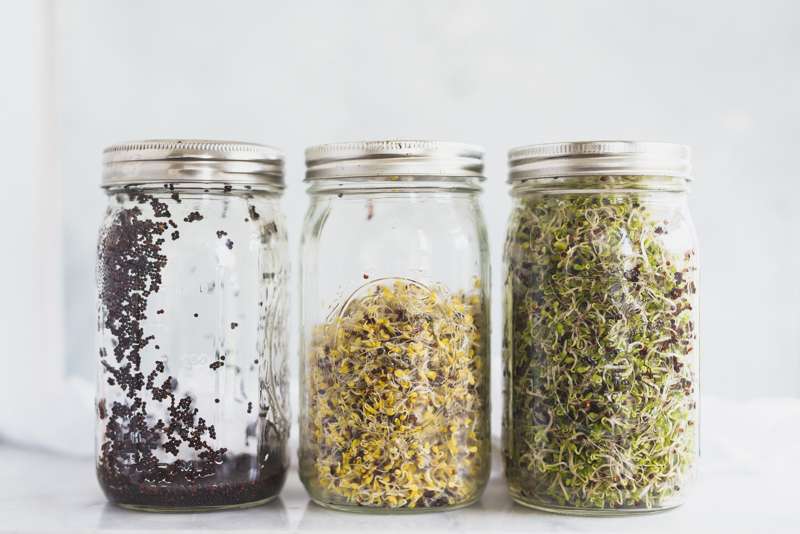Discover the Joy of Growing Broccoli Sprouts at Home
Few superfoods combine ease of growth, impressive nutrition, and delicious versatility quite like broccoli sprouts. These tiny shoots pack a mighty punch of antioxidants, fiber, and sulforaphane—the nutrient widely celebrated for its disease-fighting and detoxifying powers. The best part? You don’t need a green thumb or garden space. Broccoli sprouts can be grown year-round inside your home with surprisingly few supplies and little effort.
If you’ve ever been curious about cultivating these potent sprouts but felt overwhelmed by complex guides, this article breaks it down clearly. Learn what you need to get started, how to care for your sprouts daily, keep them safe from mold and bacteria, know exactly when and how to harvest, and store them properly so you can enjoy fresh, vibrant broccoli sprouts anytime.

Preparing to Grow Broccoli Sprouts: Essential Supplies and Setup
Starting your own broccoli sprouts garden at home is surprisingly straightforward. Gather the right supplies and prepare your space to give your sprouts the best possible start.
What You’ll Need
- Organic Broccoli Sprouting Seeds: Choose untreated, non-GMO seeds designed specifically for sprouting. They ensure successful germination and avoid chemicals.
- A Wide-Mouth Glass Jar or Sprouting Tray: Jars fitted with a spy lid or breathable mesh covers are excellent for beginners. Sprouting trays offer more space for growth if desired.
- Filtered or Spring Water: Chlorine or tap water may slow growth or introduce contaminants, so filtered water is preferred.
- Mesh or Cheese Cloth: For covering jars and allowing airflow while keeping debris and insects out.
- A Dark, Warm Spot: Ideal spouting temperatures range between 68-75°F (20-24°C). Darkness simulates soil conditions and encourages strong sprouting.
- Indirect Light Source: Once sprouts show leaves, move to a bright but indirect light area to promote chlorophyll formation without damaging delicate greens.
Setting Up Your Sprouting Station
Find a quiet corner in your kitchen, pantry, or windowsill that meets temperature and light requirements. Cleanliness is key—sanitize jars, trays, and coverings before starting to minimize contamination risks.
Step-by-Step Guide: Daily Care and Growing Process
Step 1: Soak the Seeds
- Place 1-2 tablespoons of broccoli sprout seeds in your jar or tray.
- Cover with triple the volume of filtered water.
- Soak for 8-12 hours, ideally overnight, to hydrate and activate the seeds.
Step 2: Drain and Rinse
- Drain all soaking water thoroughly.
- Rinse the seeds gently with cool filtered water.
- Drain well to avoid standing water that can lead to mold.
Step 3: Incubate Sprouts in Darkness
- Place the jar tilted upside down at a ~45° angle for drainage.
- Cover with a mesh or breathable cover.
- Keep in a dark, warm spot.
- Rinse and drain your sprouts 2-3 times daily to keep them moist and fresh.
Step 4: Expose to Light for Greening
- After 3-4 days, when tiny green leaves emerge, move sprouts to indirect sunlight.
- Continue rinsing daily to maintain freshness and prevent drying.
Step 5: Harvesting
- Typically ready to harvest in 5-7 days, when sprouts are 1-2 inches long.
- Rinse thoroughly under cool water before consuming.
- Optional: Snip off roots if preferred for cleaner eatability.
Troubleshooting and Common Growing Issues
Mold Growth and Bad Odor
Mold is the most common issue due to excessive moisture or poor airflow. Avoid by:
- Rinse thoroughly 2+ times daily.
- Ensuring complete draining.
- Cleaning jars and mesh regularly.
- Keep the sprouting environment temperature stable and avoid heat.
Weak or No Sprouting
Causes:
- Old or chemically-treated seeds.
- Improper soaking time.
- The temperature is too cold or too hot.
Solution: Use fresh, organic seeds and maintain appropriate temperature.
Sprouts Turning Yellow or Wilting
This is likely due to insufficient light or excessive moisture. Move sprouts to brighter light and ensure proper rinsing and airing.
Safety and Hygiene Tips to Protect Your Sprouts
- Wash your hands thoroughly before handling seeds and sprouts.
- Use only clean, sterilized equipment.
- Replace soaking and rinsing water with filtered water.
- Store harvested sprouts in sealed containers in the refrigerator.
- Consume within 4-5 days to avoid spoilage.
Harvest Timeline: When to Pick Your Broccoli Sprouts
Timing is important:
- Day 1-2: Seeds absorb water and begin to swell.
- Day 3-4: Germination and first tiny white roots appear.
- Day 5-7: Green cotyledon leaves emerge; ready for harvest.
- Day 8+: Usually considered overgrown for sprouts, better suited as microgreens.
Harvesting too early limits nutrition; too late increases fiber and bitterness.
Storing Your Broccoli Sprouts
- Refrigerate in an air-tight but breathable container.
- Line the container with paper towels to absorb excess moisture.
- Avoid washing before storage; rinse only before consumption.
- Keep fresh for 4-5 days for the best texture and nutrient retention.
Benefits of Growing Your Broccoli Sprouts at Home
- Complete control over seed quality and safety
- Saves money compared to store-bought sprouts
- Freshness and potency maximized
- Sustainable and zero-waste
- An engaging experience that connects you to food origins
Bonus: Video Tutorial and Photo Walkthrough Suggestions
Search for reputable YouTube channels focused on sprouting, gardening, or health foods for visual, step-by-step sprout growing instructions. Some popular keywords to look for are “broccoli sprouts growing tutorial” or “easy broccoli sprouts at home.”
Your Path to Nutrient-Rich Broccoli Sprouts
Growing broccoli sprouts is an accessible, rewarding way to supercharge your diet with fresh enzymes, antioxidants, and vitamins. With minimal supplies and daily care routines, you can propagate these compact nutrition bombs right in your kitchen—no garden needed.
Embrace the rhythm of soaking, rinsing, and harvesting, and start integrating broccoli sprouts into your smoothies, salads, and meals for natural, whole-food vitality.